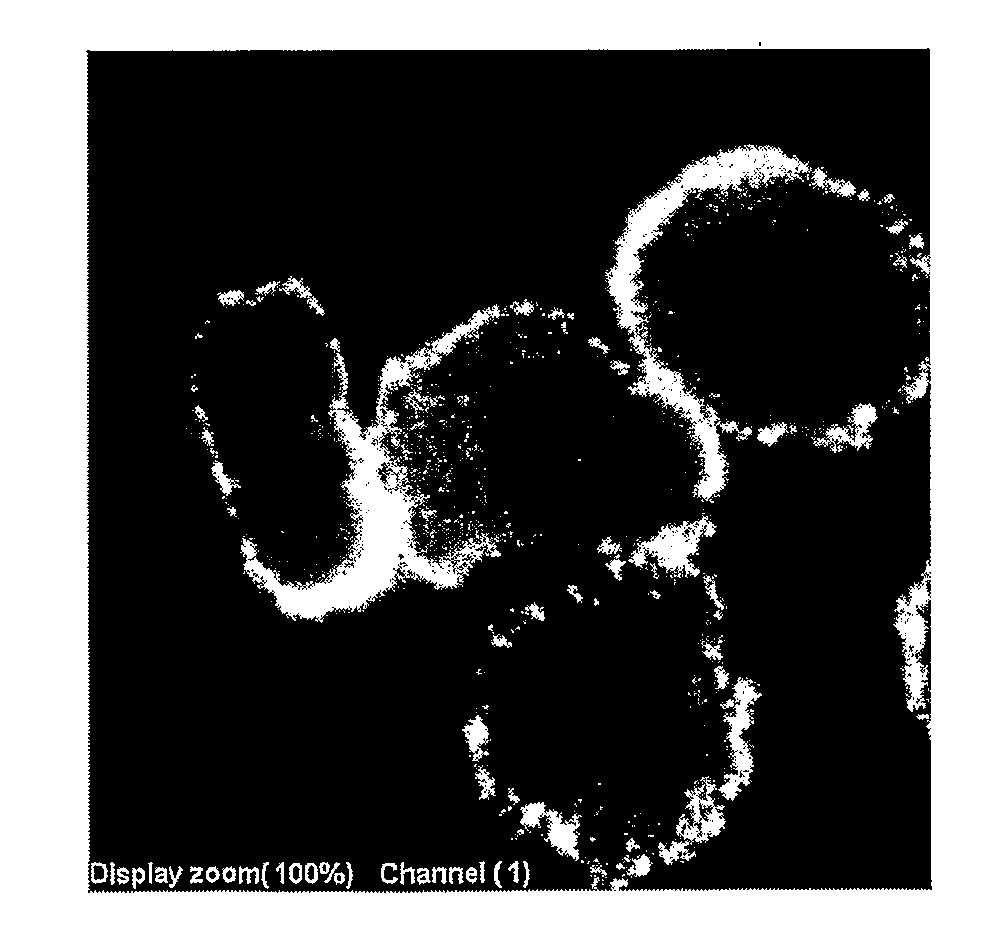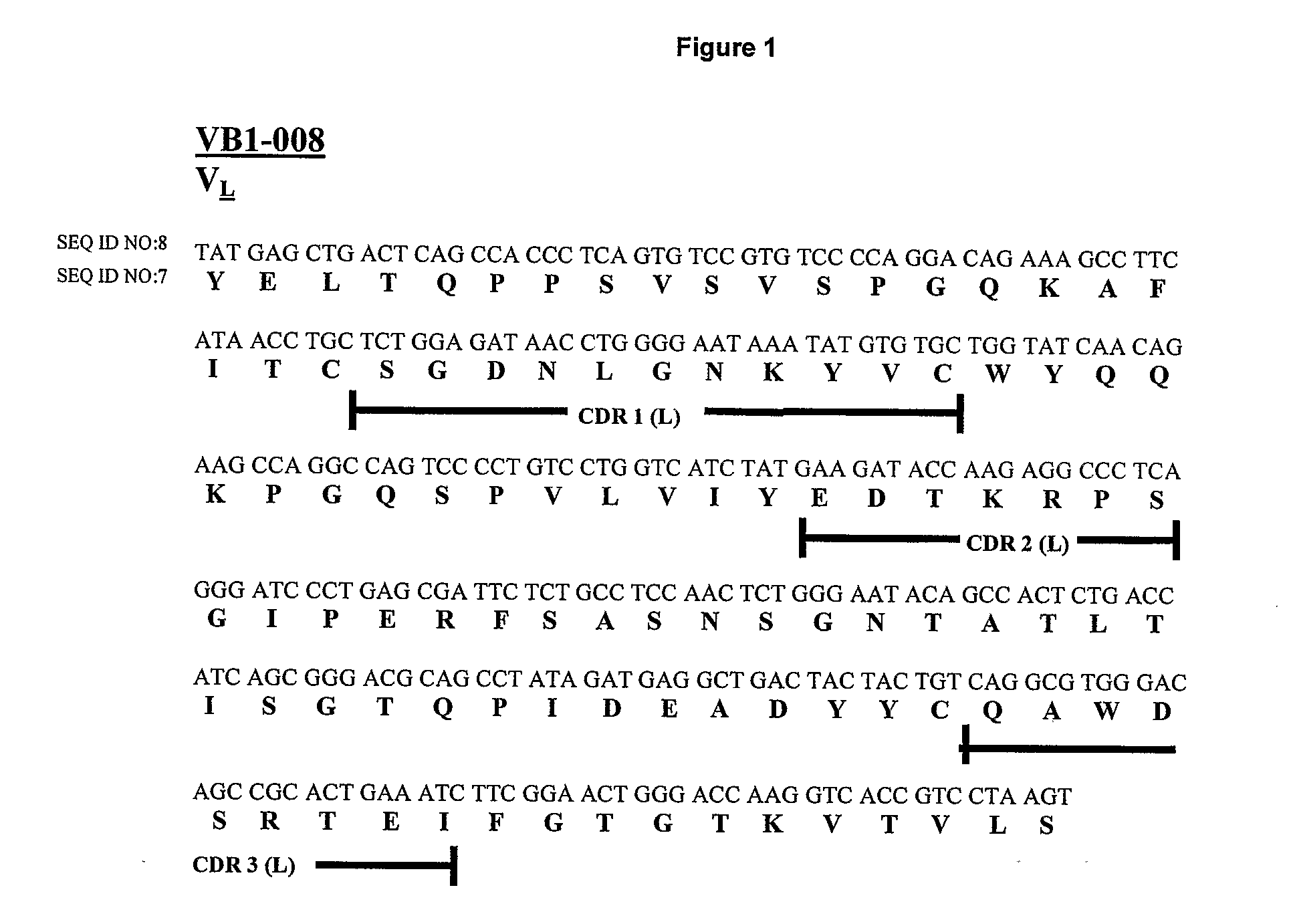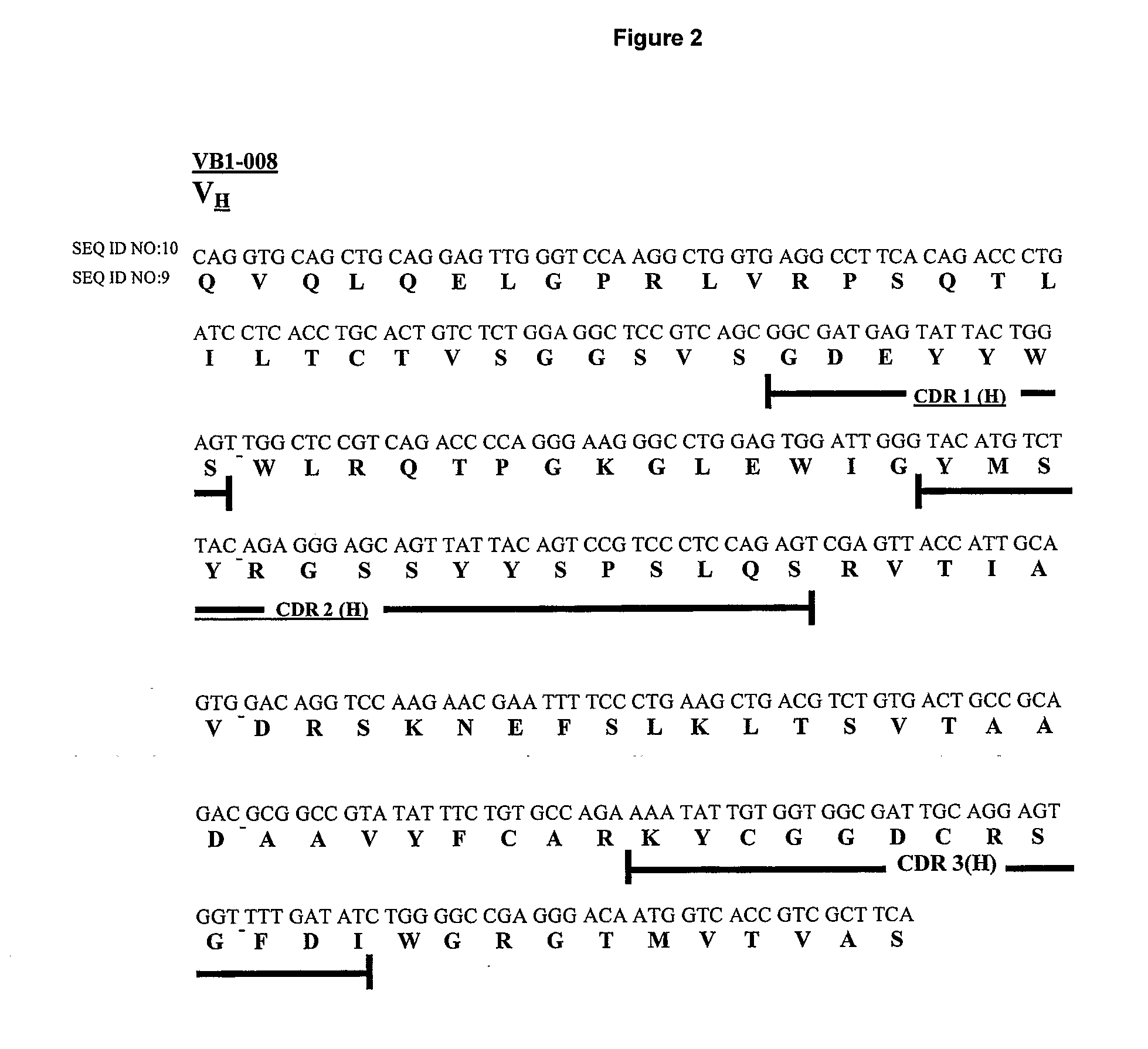Tumor Specific Antibody
- Summary
- Abstract
- Description
- Claims
- Application Information
AI Technical Summary
Benefits of technology
Problems solved by technology
Method used
Image
Examples
example 1
Generation of VB1-008 Monoclonal Antibody
[0256] The VB1-008 monoclonal antibody was generated from the peripheral blood lymphocytes of a breast cancer patient. TM-SH-P2 was used as the fusion partner to generate the monoclonal antibody. VB1-008 is an IgG1, lambda monoclonal antibody.
[0257] Messenger RNA (mRNA) was isolated from hybridoma cells and first strand complement DNA (cDNA) was synthesized. The cDNA was then used to isolate antibody H and L chain genes by PCR. PCR primers were designed (see note) according to the consensus framework regions of the H (Gamma) and L (Lambda) chain isotypes. The PCR products were individually cloned into the TOPO-pCR 2.1 vector and transformed into E. coli cells. Individual clones containing the inserts in TOPO-PCR 2.1 were isolated and grown. Plasmid DNA was purified and sequenced.
Gamma Primers:1)5′ TCT AAA GAA GCC CCT GGG AGC ACA GCT CAT CAC CAT G 3′(SEQ ID NO:18)2)5′ GCC CGG GGA GCG GGG GCT TGC CGG CCG TCG CAC TCA 3′(SEQ ID NO:19)3)5: ACC...
example 2
Antibody Profiling by Measuring Tumor Cell Reactivity
[0263] VB1-008 was tested by flow cytometry for tumor cell reactivity against two panels of cell lines. The first panel comprises fifteen different types of epithelial cancers while a second panel consists of five types of normal cells. The VB1-008 results are summarized in Table 2. VB1-008 had an MF>2.0 for all cancer types tested. MF values indicate the mean calculated from the sum of the mean fold increase in median fluorescence over the control antibody from all cell lines in each indication. The strongest indications were, but not limited to, breast, lung, melanoma and prostate. In comparison, VB1-008 was more reactive with most of the tumor cell lines than with the normal cell lines. The two exceptions were the kidney and lung cell lines; however, they were still lower than the corresponding tumor cell type. See Table 2. The fold-increase in VB1-008 reactivity of tumor: normal varied from ˜2 to 7.
example 3
[0264] VB1-008 was tested against the flow positive tumor cell line SKBR-3 to assess the appropriate tissue format to demonstrate membrane staining and to define the optimal conditions for staining. This antibody demonstrated cytoplasmic and cell membrane staining in all the experimental groups, including fixed embedded cells. In fixed cell pellets incubated overnight with VB1-008, 80% of the cells showed cytoplasmic staining, and 10% of them showed cell membrane staining. Representative pictures of cell membrane staining of formalin-fixed cell pellet cores are shown in FIG. 3.
[0265] Once the optimal staining conditions were identified, the antibody was tested in comparison with an isotype control (4B5) on a low density (LD) array of critical normal for normal tissue reactivity. The results for VB1-008 are summarized in Table 3. No significant membrane staining of any of the normal critical tissues was observed. High density (HD) array staining of non-criti...
PUM
| Property | Measurement | Unit |
|---|---|---|
| Atomic weight | aaaaa | aaaaa |
| Volume | aaaaa | aaaaa |
| Volume | aaaaa | aaaaa |
Abstract
Description
Claims
Application Information
 Login to View More
Login to View More - R&D
- Intellectual Property
- Life Sciences
- Materials
- Tech Scout
- Unparalleled Data Quality
- Higher Quality Content
- 60% Fewer Hallucinations
Browse by: Latest US Patents, China's latest patents, Technical Efficacy Thesaurus, Application Domain, Technology Topic, Popular Technical Reports.
© 2025 PatSnap. All rights reserved.Legal|Privacy policy|Modern Slavery Act Transparency Statement|Sitemap|About US| Contact US: help@patsnap.com



